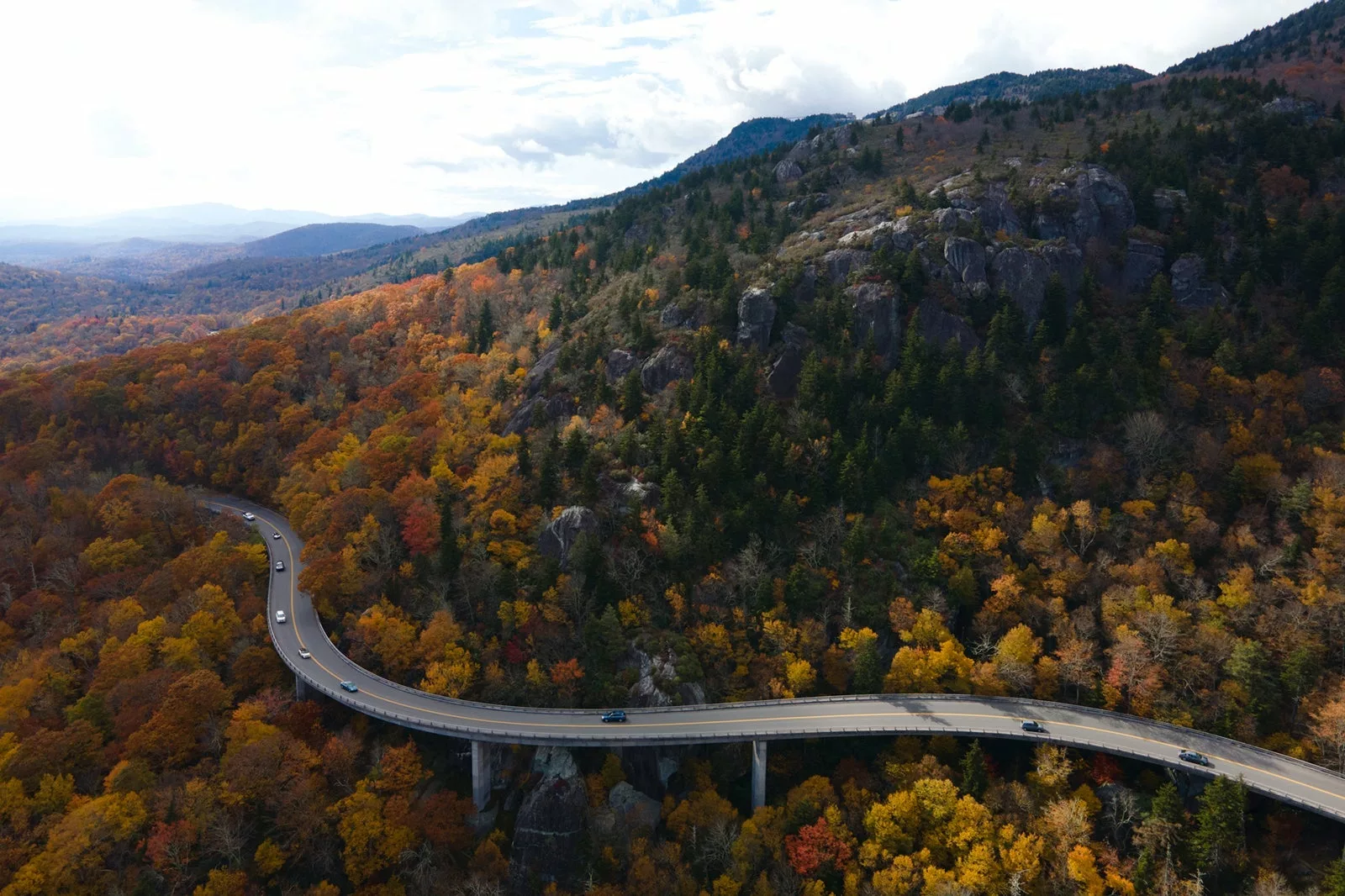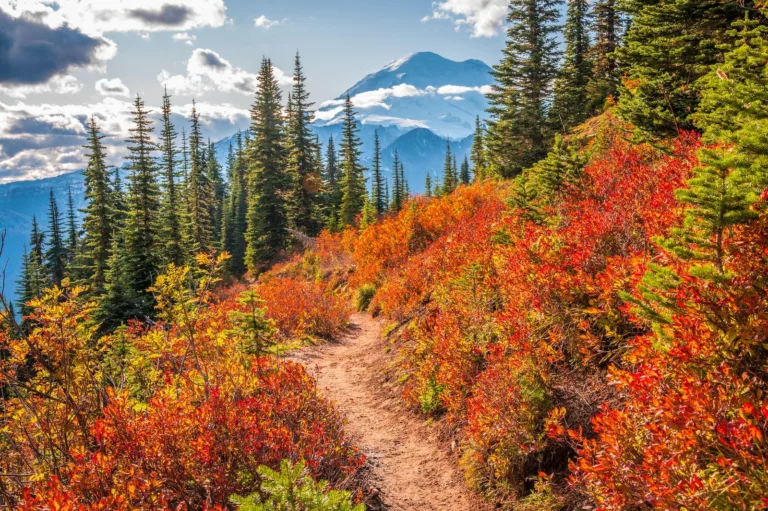Your Essential Guide to the Blue Ridge Parkway Road Trip
The Blue Ridge Parkway, a breathtaking 469-mile stretch of scenic highway, has reopened nearly a year after Hurricane Helene impacted the southeastern U.S. This iconic route winds through the stunning Blue Ridge Mountains, connecting Great Smoky Mountains National Park in North Carolina to Shenandoah National Park in Virginia. With a speed limit of 45 mph, the parkway prioritizes stunning vistas and natural beauty over speed, offering travelers an unforgettable experience.
For those considering a road trip along this picturesque corridor, there are numerous entry points and attractions to explore. Asheville, North Carolina, and Roanoke, Virginia, are two vibrant cities that serve as excellent starting points, but if you have the time, driving the entire length of the parkway will reward you with countless scenic viewpoints, hiking trails for all skill levels, and fascinating historical sites that reflect the region’s rich Appalachian heritage.
Planning Your Trip
Getting There
The nearest airport to the southern end of the Blue Ridge Parkway is McGhee Tyson Airport (TYS) in Knoxville, Tennessee, located about a two-hour drive away. If you’re considering a round-trip car rental, Charlotte Douglas International Airport (CLT) is a good option, just 3.5 hours from the southern entrance and 4.5 hours from the northern terminus at Shenandoah. Atlanta is also 3.5 hours away from the south end, providing a beautiful drive through Georgia’s Appalachian Mountains. From the northern end, Dulles International Airport (IAD) near Washington, D.C., is approximately a 2.5-hour drive.
While there is no fee to drive the Blue Ridge Parkway itself, entering Shenandoah National Park costs $30 per vehicle (unless you have a park pass), and Great Smoky Mountains National Park charges parking fees.
Best Times to Visit
The parkway is stunning year-round, but the best times to visit are from late spring through fall. Late May to mid-June is ideal for wildflower viewing, while the brilliant fall foliage typically peaks from mid-October to early November. Temperatures along the parkway are generally 5 to 10 degrees cooler than in the surrounding lower elevations, making it a refreshing escape from summer heat. However, be prepared for possible snow and ice in winter, when many facilities may be closed.
Must-See Stops Along the Parkway
Starting at the southern end near the Oconaluftee Visitor Center in Great Smoky Mountains National Park, you can explore this expansive 522,419-acre park filled with forests, meadows, and streams. Highlights include the observation tower at Clingmans Dome, the highest point in Tennessee, and the scenic Roaring Fork Motor Nature Trail.
As you drive along the parkway, you’ll encounter numerous scenic pullouts. Notable stops include:
– Waterrock Knob (Milepost 451): A visitor center and picnic area with breathtaking sunset views.
– Mount Pisgah (Milepost 408): A challenging 2.6-mile round-trip hike leading to panoramic views of Asheville.
Asheville, known for its vibrant culinary scene and artistic community, is a must-visit. Spend time at the Blue Ridge Parkway Visitor Center and the Folk Art Center, and indulge in the local dining scene in neighborhoods like South Slope and West Asheville. Don’t miss the Biltmore Estate, an 8,000-acre property where you can easily spend a full day.
Accommodations
While there are no accommodations within Great Smoky Mountains National Park, nearby towns like Cherokee, North Carolina, and Gatlinburg, Tennessee, offer various lodging options. In Asheville, you’ll find a range of hotels, including charming bed-and-breakfasts and modern properties.
As you continue your journey, make sure to stop at:
– Craggy Gardens Picnic Area (Milepost 364): A lovely spot for a picnic surrounded by stunning azaleas and mountain laurels.
– Grandfather Mountain (Milepost 305): Home to a mile-high swinging bridge and beautiful hiking trails.
Exploring Virginia
As you cross into Virginia, take a break at The Bluffs (Milepost 238), the parkway’s oldest eatery, and enjoy a meal at the rustic diner known for its fried chicken. Nearby, the historic Brinegar Cabin offers a glimpse into the region’s past.
Key attractions in Virginia include:
– Cumberland Knob (Milepost 218): A scenic 2-mile loop waterfall hike.
– Mabry Mill (Milepost 176): A historic mill where you can watch demonstrations and enjoy a meal.
Roanoke, a bustling hill city, is an ideal place to spend the night. Visit local attractions like the Taubman Museum of Art and the O. Winston Link Museum, and explore the Historic Roanoke City Market for locally sourced food.
Final Leg to Shenandoah National Park
As you approach the northern terminus of the Blue Ridge Parkway, consider a detour into Buchanan, Virginia, to cross a vintage swinging bridge over the James River. The parkway ends at an overpass above Interstate Highway 64, transitioning into Skyline Drive, which runs through Shenandoah National Park.
Skyline Drive offers similar scenic beauty, with a lower speed limit of 35 mph and a $30-per-vehicle fee to enter. If you plan to continue your adventure here, consider staying in one of the park’s hotels for stunning views of the Allegheny Mountains.
Conclusion
With the Blue Ridge Parkway fully reopened, now is the perfect time to embark on a road trip along this magnificent route. From lush forests and vibrant wildflowers to stunning fall foliage, the parkway offers an array of experiences for nature lovers and adventure seekers alike. Plan your journey to take advantage of the breathtaking views and rich cultural history that this iconic road has to offer. Whether you’re a seasoned traveler or a first-time visitor, the Blue Ridge Parkway promises a memorable escape into the heart of America’s natural beauty.







